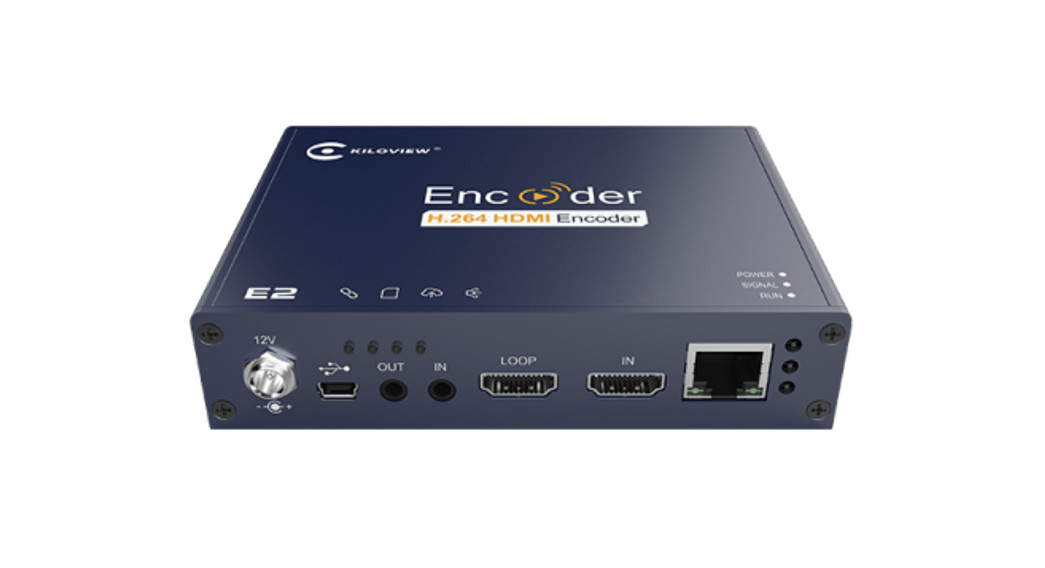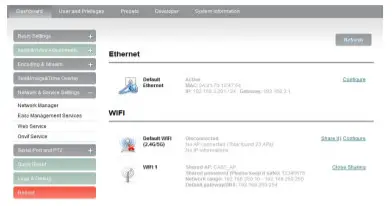Quick Start GuideSDI/HDMIWired / Wireless HD Video Encoder2020 REV.1
Thank you for purchasing SDI/HDMI series video encoder. Before installing our product, please read this user manual carefully. Please strictly follow our manual or install and use our encoder, or install and use under guiding by a professional person, to protect your body safety and to avoid the encoder damage from physical and electrical. The encoder may be damaged if the incorrect electrical connection or the physical installation, even threaten the operator’s safety.
This product is divided into SDI or HDMI interface, Please configure based on what you purchased.Kindly note: This is only the Quick Start Guide, if there are any questions, please contact the supplier or visit the website for more details.
Packing list
Packing list1*Video encoder; 2*WIFI antenna (only for wireless video encoders);1*DC 12V/1A Power Adapter; 1* Quick Start Guide; 1*Warranty card.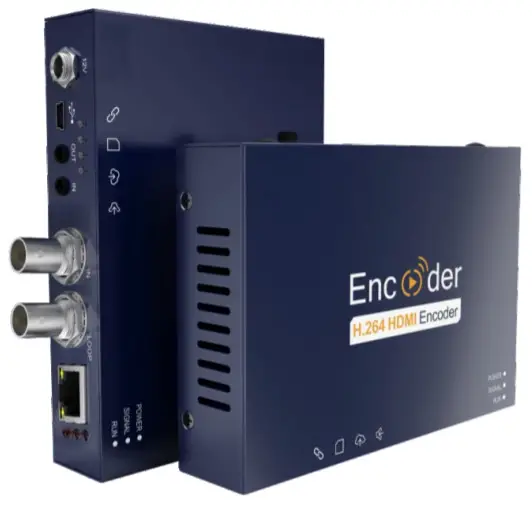
NOTE:Due to products updating, packing lists will be a little different.
Device interfaces
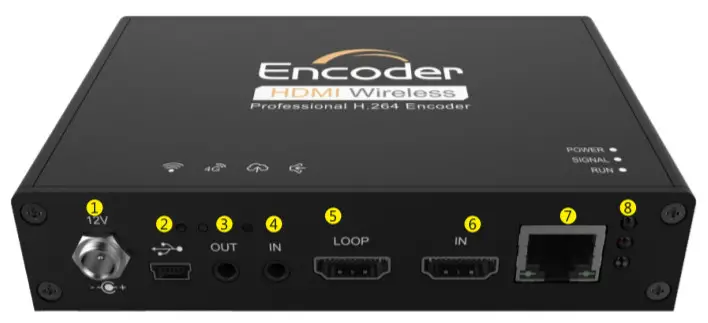
| 1. Power input2. Mini-USB3. Audio output4. Audio input5. 6. SDI/ HDMI Input and Loop7. Ethernet interface8. Status LEDs |
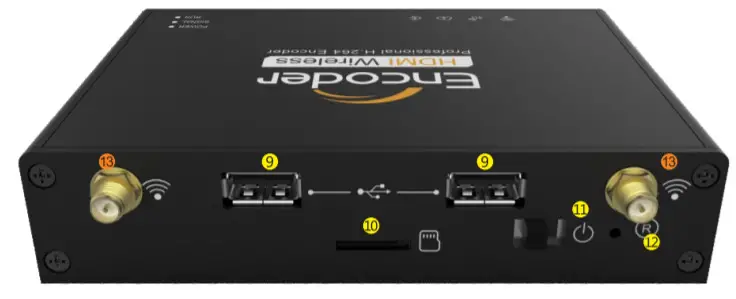
| 9. USB interface10. Micro SD/TF Card11. Power Switch12. Reset13. WiFi Antenna(for wireless encoder only) |
Installation and Connection
Connecting video signalConnect the SDI/HDMI signal from the source (such as a camera) to the SDI/HDMI input port of the device via a cable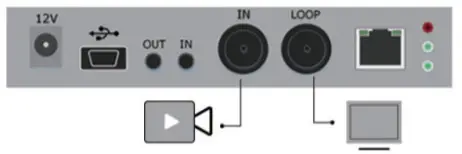
NOTE:HDMI’s input interface is on the rightConnect internetConnect one end of the network cable to the encoder Ethernet port.The other end is connected to the network switch or the computer’s Ethernet port.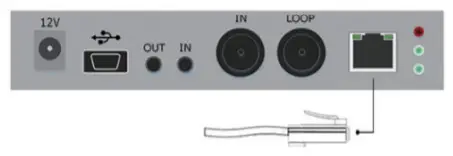
Connect the power adapterUsing the power adapter (DC 12v) connect to the main product, after the power is turned on, then the product starts working immediately. Connect WiFi antenna(for wireless encoder only) Connect the WiFi antenna with the device antenna interface.LED indicator descriptions
Connect WiFi antenna(for wireless encoder only) Connect the WiFi antenna with the device antenna interface.LED indicator descriptions
RUN/SIGNAL/POWER
| Name | Color | Status | Description |
|
|
Red | Always onOff | The power supply is connectedThe power supply is not connected |
|
|
Green | Always onFlashingOff | SDI/HDMI signal is connectedRestore device to factory settingsSDI/HDMI signal is not connected |
|
|
Green | FlashingOffAlways on | WorkingWorking abnormal/not startedDevice is starting |
Video/ Audio source
| Signal Source | Option | Description |
| Video source | Auto | SDI/HDMI Input |
| Audio source | Auto | SDI/HDMIembedded digital audio |
NOTE:Select the sub-functions “Video Source Selection and Adjustment” and “Audio Source and Volume Adjustment” of the “Video/Audio Adjustment”function on the web management interface to configure the video and audio source selection.
Device login and network configuration
Default IP address and web loginThe Failsafe IP address is 192.168.1.168 with subnet mask 255.255.255.0. Normally, you don’t need to modify this IP address.
Login to the WEB ConsoleIf log in for the first time, please use the Failsafe IP address You can access http://192.168.1.168, to log in to the web console.
IP address configurationAfter login, you can configure the IP according to the network, the IP will be used for pushing and device management. You can configure it to manually set the IP or DHCP.( Default setting is DHCP )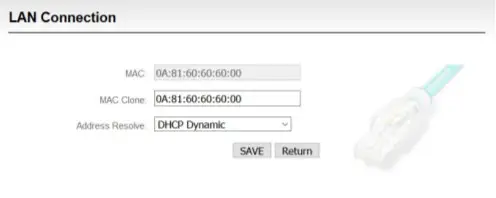
Connect WIFI (for wireless encoder only)
- Click web management interface ”Network&Service Settings-Network manager”

- Click “Configuration” under wifi for Wifi setting interface

- Users could configure according to the related parameters of Wifi hotspots. Put in password, after success, it could transmit through a wireless network.
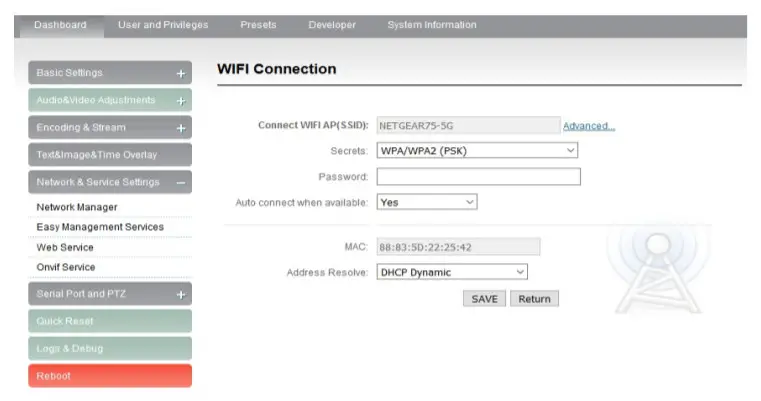
Note:When using the encoder Wifi function, don’t connect to the wired network or optionally delete the gateway address of the wired network. Becausethe wired network priority is higher than Wifi, the simultaneous connection may cause the WiFi network to push stream unsuccessfully.
Coding and pushing
The encoder supports H.264 encoding, supports a variety of push-flow methods, such as RTP, RTMP, RTMPS, UDP, HLS, etc.The RTSP services is always enabled for the device, all tools which support the standard RTSP protocol and H.264 decoding (such as VLC media player) can be connected to the encoder and get video streams.The default RTSP accessing URL is:Main: rtsp://encoder IP address:554/ch01SUB: rtsp://encoder IP address:554/sub01Note:”ch01”, ”sub01” is the RTSP session ID.You can change the session ID in the Web console.The following is an example of RTMP to introduce the configuration of push flow. Other push flow methods can be login to the device page for detailed configuration.
RTMP Live Streaming
Add streaming serviceOur device’s H.264 main/sub-stream supports adding up to 8 same or different streaming media services, to meet your needs of adopting same/different stream media protocols for multi-goal pushing.On the management interface of “Encoding&Stream-Encoding and Stream Settings”, for the main/sub-stream to choose “add one stream service”, users can add the needed service type.Add RTMP pushing streaming serviceCurrently, main video live streaming platforms require an” RTMP” service. After adding the RTMP pushing service, click the settings icon to configure RTMP parameters.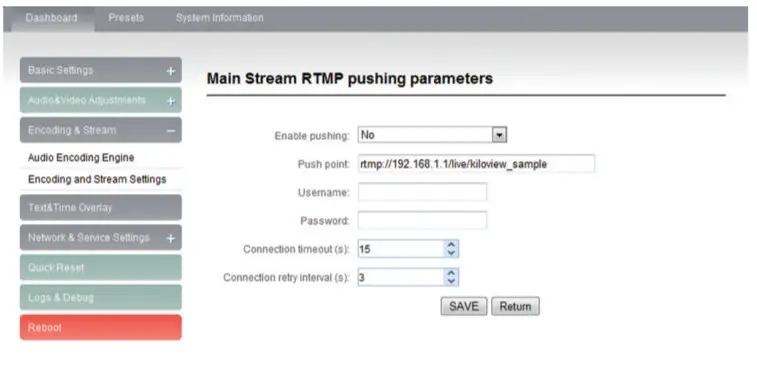
Take YouTube for an example“Streaming point” is the RTMP address given by the platform ( Take YouTube as an example ).( Other platforms are similar if questions please contact platform technical support for help ).RTMP push-flow must first get a push-flow URL address from the platform Login to YouTube got below address: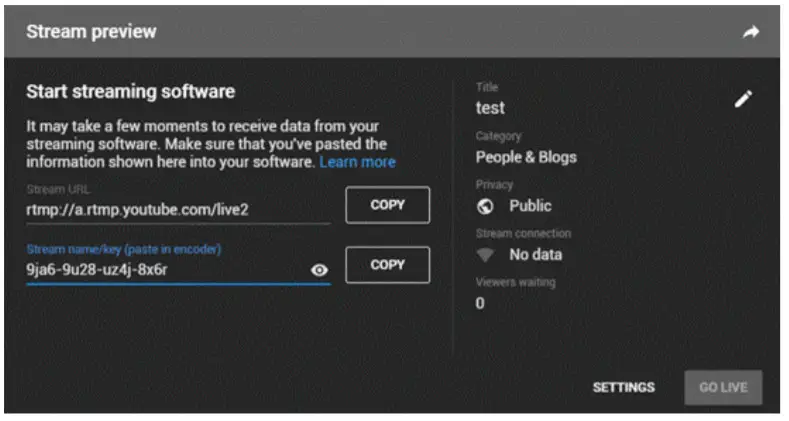
The streaming point should be like Server URL+Stream name/key, for example, rtmp://a.rtmp.youtube.com/live2/9ja6-9u28-uz4j-8x6rAfter you get the RTMP URL address, you need to set it up in the encoder.If the platform requires a user name and password verification, you also need to fill in the corresponding parameters in the encoder.NOTE:In the case of RTMP push mode, fill in ramps URL at Push point and set Use old RTMP version too yes, so that it can be supported.
Restore factory settings
Restore factory settingsIf users change parameters that lead encoder couldn’t work(The typical situation is changed network address, so it couldn’t be visited encoder bynetwork), users could restore factory settings to the default value.
Two methods for restoring factory settings:
- Choose” Basic Settings>Restore factory settings” on the web console.
- Press the “Reset” button.
Hold the ‘Reset’ button for more than 5 seconds, restoring the factory setting will lead to the device reboot, and restarting the course will last about 20s.
NOTE:These parameters will be restored after restoring the factory setting:
- Login Username and password will be as admin;
- The IP address will be restored as 192.168.1.168, subnet mask will be 255.255.255.0;
- All encoding parameters of video and audio will be restored to the factory default value;
- Media transmission parameters will be restored as factory default values.
Firmware upgrading
Firmware upgradingThis device supports online firmware upgrading for upgrading software.Select” Basic Settings”, pull downward, and click” Update firmware ”.On the page, click” Browse” to select the upgrading file, and click” Upgrade” to upgrade the device.
NOTE:After uploading the firmware file successfully, the encoder will automatically restart, this process will take about 30s-60s(the time will be different according to upgrade content), and please be patient.After the upgrade is complete, via the web interface” system information>version information” to check whether the latest version information in accordance with expected and confirm the upgrade succeeded.
Quick reset and reboot
Quick reset and Reboot“Quick Reset” function is to reset encoding service, normally used for making changed parameters to effect immediately.The whole process lasts around 3s.The “Reboot” function is used for encoder reboot. Device rebooting lasts around 20s.
NOTE:Select” Quick Reset”, current encoding will be suspended for a while; Select” Reboot”, the encoder will ‘warm’ reboot.Under some circumstances, reboot maybe with the help of ‘cold’ reboot: power down then power up the device.
[xyz-ips snippet=”download-snippet”]

